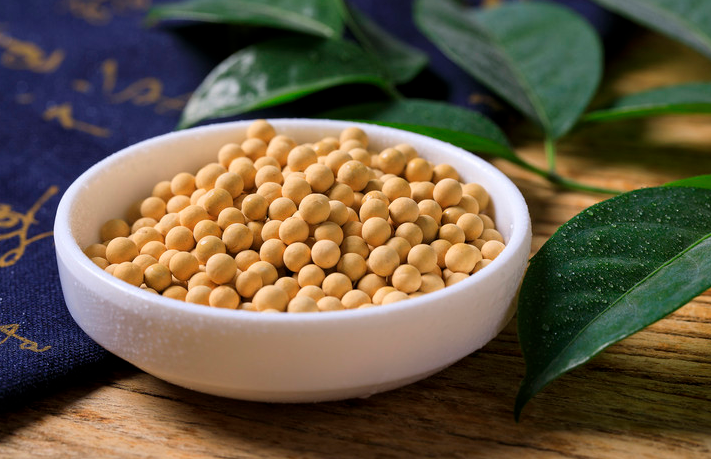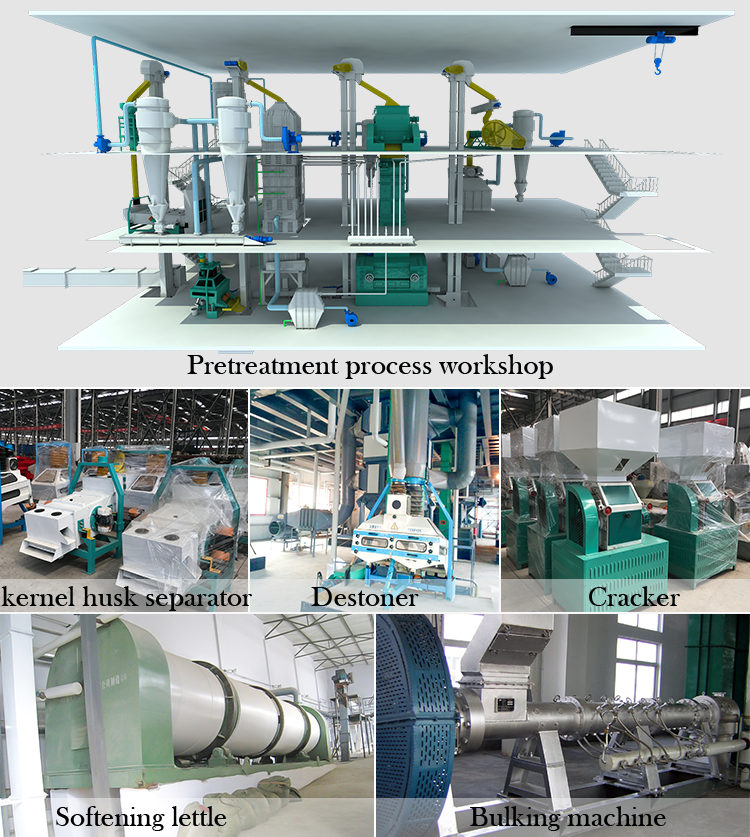The cost of a single ton of steam consumption in a soybean crushing plant accounts for about 40% of the cost of soybean processing. Steam consumption is one of the important indicators to measure the level of production process equipment and management level of the plant. With the rise in energy prices and fierce competition among oil plants, reducing steam consumption has become the focus of improving quality and efficiency, saving energy and reducing consumption. The steam consumption of the factory is as low as 200kg/T of material and as high as 265kg/T, with a difference of 30%. The level of steam consumption is closely related to product yield, product quality, and other electricity and solvent consumption. Why is there such a big difference in steam consumption between factories? Does the very low consumption mean that the production process equipment level and management level are relatively high?

In a press plant with a production capacity of more than 1500 tons/day, there is no qualitative difference in equipment level and operation level among peers, and the level of steam consumption is more a manifestation of the level of operation and management.
The steam consumption of a large-scale factory firstly depends on the number of days that the factory is continuously started, that is, the level of capacity utilization, because the equipment pipeline is preheated when the press plant is started. The longer the continuous start-up time, the lower the consumption. On the contrary, business shutdowns, equipment failures, etc. If factories are opened frequently, steam consumption is bound to be high. To maintain continuous and stable production, the higher the utilization rate of equipment (capacity), the lower the production consumption and labor costs, and the more stable the quality. Factory production and operation are often well planned, the quality is more stable, the consumption is lower, equipment maintenance and repair are done step by step, and the front-line workers are well organized and can achieve results. On the contrary, the production and operation plan is poor, the quality is unstable, the consumption is relatively high, the departments are arguing with each other, the employees are tired and complain, and they are even prone to safety production and quality safety accidents.

1. The influence of process equipment on steam consumption
(1) Process and equipment selection affect the consumption index of production. For the same processing volume, the more equipment is used, the more heat equipment and pipelines are used, and the more steam is used for transportation equipment. For example, a 3000-ton processing plant will use more equipment. Two quenching and tempering towers consume more steam than one quenching and tempering tower. DT and DC are separated, which consumes more steam than a single DTDC.
(2) During the equipment installation process, most of the heating equipment and pipelines are insulated, but some factories of the extractor, cold-drying box, hot bean, and hot embryo conveyor are insulated, and some are not insulated, which also affects energy consumption. Influence.
(3) Some factories have crude oil degumming and phospholipid drying equipment in the leaching workshop, while some factories do not. The steam statistics have different calibers, which also caused some differences.
(4) Some factories use steam power for the vacuum and stripping vacuum of the mixed oil evaporation condensation system in the leaching workshop, and some factories use mechanical vacuum pumps. Different processes cause differences in steam consumption.
(5) The installation location of the steam flow meter in the workshop also has an impact on the assessment and measurement of steam consumption, that is, the problem of pipe loss apportionment.
2. On-site management and maintenance
(1) Poor site management, such as steam or water running and dripping, will inevitably affect steam consumption.
(2) Whether the safety valves, pressure regulating valves, and pressure relief valves working in the workshop work normally, and related instruments need to be adjusted regularly.
(3) The heat exchange surface of the heat exchanger needs to be inspected and cleaned regularly. If there is fouling, it will affect the heat exchange effect.
(4) The steam trap is checked regularly to see if there is internal leakage and whether it is working properly?

3. Waste heat utilization
(1) The hot oil, condensed water, waste water, waste gas, etc. leaving the workshop entrain heat. Most of the factories' degummed oil or stripped crude oil, and the waste water discharged from the cooking tank have undergone heat recovery. Recently, many factories have recovered the heat energy of the hot air discharged from the DC and the hot air discharged from the expanded cold-dry box, reducing steam consumption.
(2) Some factories use the flash steam of the steam condensate tank, and some use the residual heat of the condensate. At present, the use of steam condensate to heat the air heater and the preheating of the upper layer of the tempering tower has become a hot topic. The engineer’s house believes that it is not necessary to use the waste heat of the condensed water in the factory with its own boiler. For the self-owned boiler, the quality of the condensed water should be paid more attention to. The condensed water is fully returned to the boiler room for recycling. The temperature dropped, and it seemed that the steam consumption in the press workshop was low, but when returning to the boiler room, it had to be reheated. The coal consumption did not change, but electricity consumption was increased.
4. Own boiler and external steam
Most squeezing plants use purchased steam. The purchased steam is usually superheated steam from thermal power plants, while the boilers of self-owned squeezing plants produce saturated steam, usually with a steam pressure of 8-11 kg (gauge pressure). The steam enthalpy of power plant steam is more than 10% higher than that of its own boiler. In addition, the steam condensate of thermal power plant does not need to be returned to thermal power plant. The pressing plant needs to make full use of the heat of condensate water and use the water as cooling tower supplement water and other industrial water. However, factories with self-owned boilers do not need to use the temperature difference of condensate, so the same process equipment, self-owned boilers compared with purchased steam, steam consumption will be reduced by about 10%.

The level of steam consumption in the soybean crushing plant is not a matter of the production workshop alone, but a reflection of the level of operation and management of the entire plant. Maintaining continuous production and high operating rates are important factors for the level of steam consumption. According to the law of conservation of energy, the energy required by the workshop depends on the heat taken away by the finished products, the heat discharged from the waste gas, and the waste water. The less the heat, the less steam is used in the workshop. Therefore, from the perspective of production management, make good use of waste heat. Make full use of and prevent running and dripping, and you have caught the nose of saving steam.
There is no need for the production department to blindly compare, and the management department should not overemphasize benchmarking. The situation of each factory is so different that it cannot be one size fits all. Excessive steam saving may even affect the quality of products, the yield of grease, and the consumption of solvents. It emphasizes saving. At the same time of steam, relevant factors need to be considered comprehensively.
Copyright © Henan Zhongxing Grain And Oil Machinery Co.,Ltd. All Rights Reserved. Powered by MetInfo